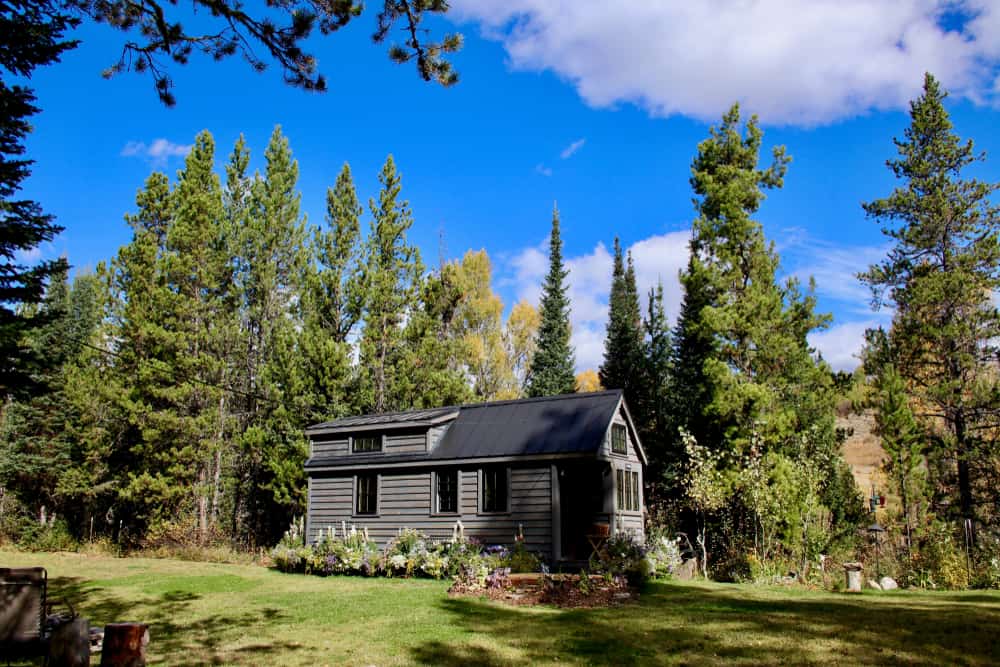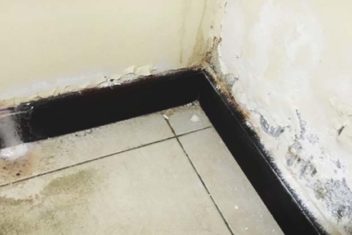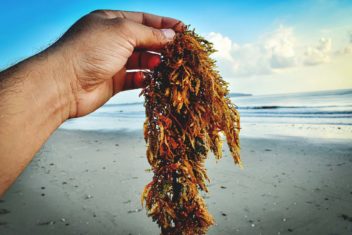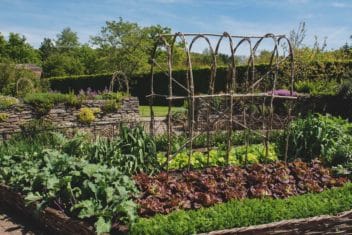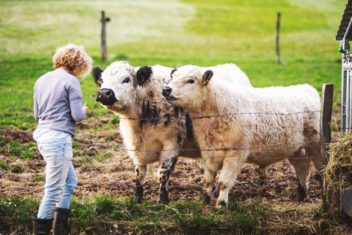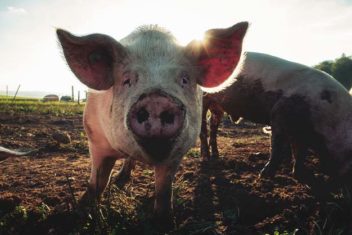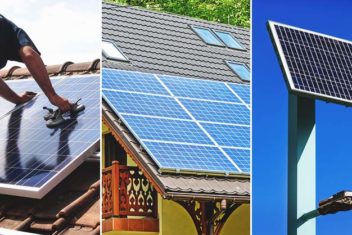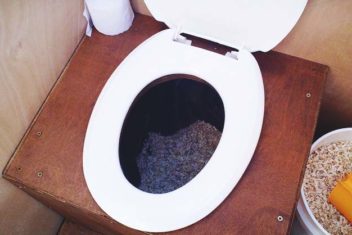Living off-grid can be a dream come true. You might aspire to full self-sufficiency, or maybe you’re prepping for Armageddon or a zombie apocalypse. Regardless of your motivations, the idea of taking care of one’s own needs — from alternate electricity and water sources to food and entertainment — is growing in popularity.
Read on to discover what it means to live off-grid, as well as what to prioritize if you want to try going this route. Taking the plunge to live off-grid requires a lot more than just packing up and moving to the sticks.
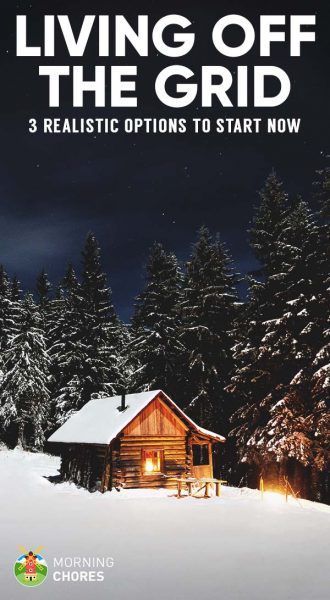
What Does Living Off-Grid Mean?
In its most basic form, living “off-grid” means your home isn’t connected to a local power grid. If the power you use in your home is from a municipal power hub, then you’re on the grid.
You have to pay money to use grid power and there’s an outage at the main hub (or if your local lines are damaged), your power will go down. This can cause a few hours of inconvenience or it can mean several days without water for rural folks whose pumps are powered by electricity.
When you’re living off-grid, it means that you either have a power source of your own, or you’re living without electricity. You might also be disconnected from other municipal lines such as water and sewage. Maybe you have an outhouse and a well, or a septic tank and a rainwater catchment system.
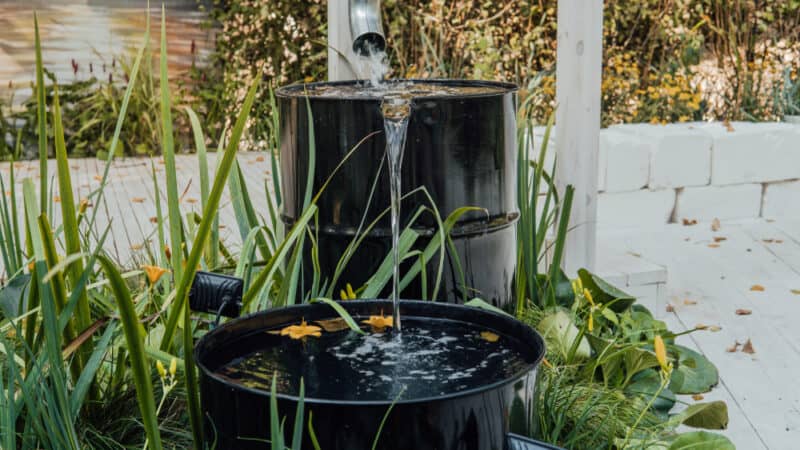
Either way, the resources you require for everyday life are supplied by your own efforts and equipment, rather than anything offered by the local government.
Some people who live off-grid are completely self-sustaining. They grow their own crops, raise livestock, spin and weave fiber to make their own clothing, and basically live like their pioneer ancestors did a couple of centuries ago. Others only live partially off-grid, using alternative electricity sources or growing a fair bit of their own food and medicine.
Your options for off-grid living depend on where you live, how much time, energy, and money you can put into alternate lifestyle options, and how much your individual creature comforts mean to you.
Three Types of Off-Grid Living
There are a few different ways of living off-grid. The three main ways are:
1. Roughing It
This is an extreme form of off-grid living that often comes about after dire circumstances. For example, people whose homes were destroyed after the California wildfires suddenly found themselves living off-grid — not by choice, but because there were no other options available.
Of course, other people decide that they’ve had quite enough of frenetic modern living and would rather go back to a much simpler lifestyle. So they sell or pack up whatever they have and head for the hills.
“Roughing it” consists of living in a shelter without running water or a standard electricity hookup. There’s usually a clean water source nearby, like a potable river or lake (though you’d likely still have to filter the water) and a means of keeping warm, like a fireplace or woodstove.
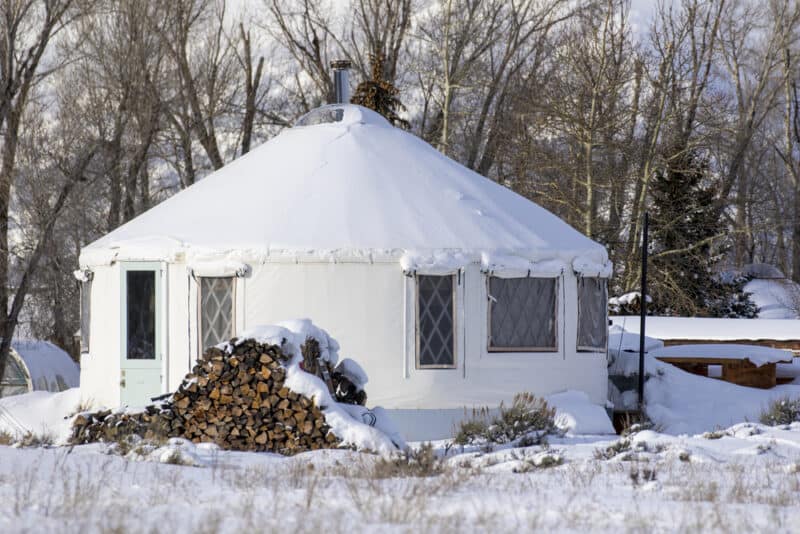
If they decide to have electricity, then they’ll likely have a generator or solar panels, and only use a bit of power when absolutely necessary. Lighting comes primarily from oil lamps and candles, and cooking is usually done in and around the hearth, wood stove, or fire pit.
This is the cheapest way to live off-grid, but as you can imagine, it’s also the most challenging. That said, around 940 million people (that’s 13% of the global population) don’t have access to electricity, so “roughing it” – whether by choice or circumstance – is far more common than most folks realize.
2. Partial Off-Grid Living
This is the type of off-grid living that’s the most attainable and most comfortable for the majority of people. It consists of significantly reducing dependence on municipal resources while increasing self-sufficiency.
For example, let’s say the aforementioned family of four lives in a semi-rural location. They might have a septic system instead of being attached to the municipal sewer system. They may still get water from the local pumping station, but they use rainwater catchment to irrigate their vegetable garden.
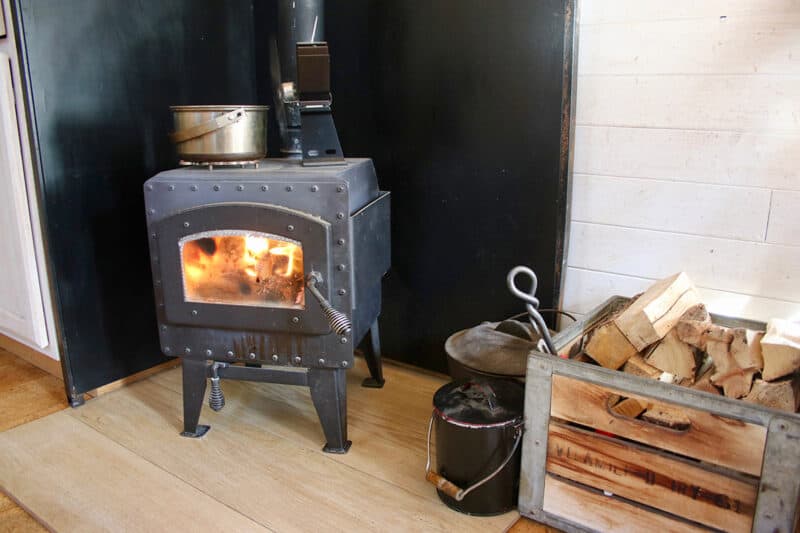
Instead of heating their home with electric baseboard heaters, they might pack a woodshed and use a wood stove. Heck, since they’re heating the house with that stove, they likely boil water and cook on it too.
They might have some chickens for eggs and grow about half of their own food. These folks likely have a cold cellar full of preserves like jams, pickled vegetables, and root vegetables, and hang their laundry on the line instead of using a clothes dryer.
It’s a way to significantly reduce one’s eco-footprint (and annual power bills) while maintaining creature comforts. Many consider it to be the best of both worlds.
3. Comfortable, Fully Off-Grid Living
This requires a lot of money to set up, but if done well it can be incredibly comfortable and rewarding. Furthermore, you won’t be reliant upon any outside resources at all to keep you warm, fed, and hydrated.
People who live fully off-grid are completely self-sufficient. They have several different power sources and plenty of clean water, but they’ll also have tons of modern conveniences. They may have a solar-powered septic system, for example, and electric vehicles that they can charge up themselves.
Some off-grid homesteaders can also supply some or all their own food needs. Raising livestock and growing vegetables are common practices, but what about the other creature comforts we’re all accustomed to? Instead of buying sugar from a nearby store, they might tap maple and birch trees and boil down the sap. Or they keep bees for honey. They might also trade crops or crafts with others in their community.
How to Start Living Off the Grid
1. Start Planning
If you’ve been considering living off-grid for a while, the first step is to make a list of your needs in order of priority. This will give you a clear idea of where you’ll need to put in the most effort for off-grid planning.
For example, let’s say you have a family of four: two adults, one child, one teenager. One adult works from home and needs a reliable energy source for at least eight hours a day so they can tend to emails, Zoom calls, etc. Also, consider the electricity required for kids to do their homework and for the family to have movie nights every weekend.
What about water? Are you connected to the municipal water line? Do you have the option to dig a well on your property? If a well isn’t an option, does your area get enough rain or snow for a catchment and cistern system?
Now think about food. Does your stove use electricity or gas? Add that power source to the list. Same with a refrigerator. Will you be able to store food safely in a cold cellar? Or will you need electricity to power a fridge and freezer?
How much food will you need to grow in order to feed everyone in your house, along with extras in case anything spoils in storage or you have unexpected visitors? Will you have livestock? What are their housing and food requirements?
Write down all the things you do on a given day and determine how much energy, water, and food are required to allow things to run smoothly.
2. Find Out the Off-Grid Laws in Your Area
Many people are surprised to discover just how constrictive laws are regarding off-grid living. You’ll have to familiarize yourself with the rules and regulations regarding alternative options in your area. This is more of an issue if you’re trying to live partially off-grid in a suburban or semi-rural environment.
You may think that owning your own property means that you have carte blanche to outfit your home with solar panels and raise some backyard chickens, but every county and municipality has its own regulations in that regard.
For example, you might buy a property and want to plunk a tiny home on it for off-grid living. But some areas have minimum home size requirements or laws against mobile homes as long-term dwellings.
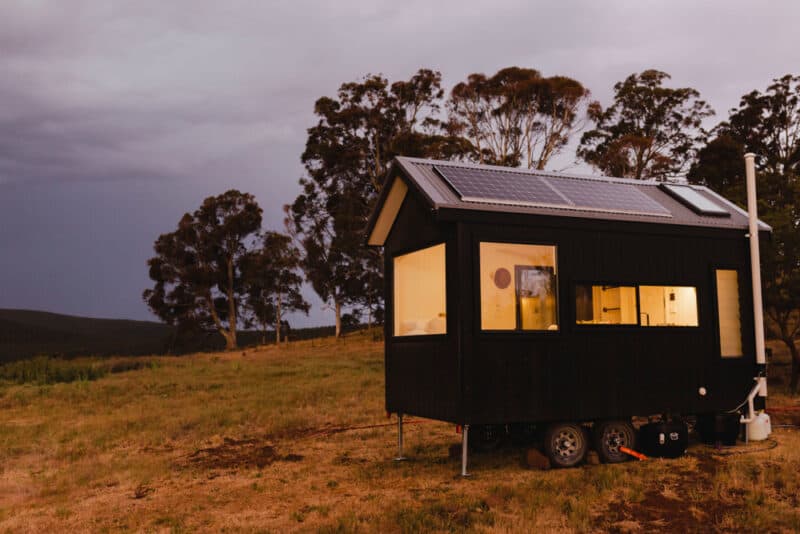
You might come up against issues regarding solar panels, or find that the area has stringent rainwater collection laws. Or let’s say you’ve created a beautiful food garden for yourself, only to have local inspectors come by and tell you that the area isn’t zoned for agriculture.
That’s not just heartbreaking, but is a waste of time, money, and energy. You’ll have to rip up all your food plants and find alternate ways of feeding yourself.
This is why it’s important to familiarize yourself with local ordinances before making ANY plans to go off-grid in your area. You might discover that trying to do so will be next to impossible. You may need to relocate if you’re dead set on living off-grid.
Best Places For Living Off-Grid
If you live in the United States, some of the most friendly states for off-grid living are Alabama, Alaska, Arkansas, Colorado, Georgia, Hawaii, Indiana, Louisiana, Missouri, Tennessee, and Texas. In Canada, your best options are Alberta, British Columbia, Manitoba, New Brunswick, Nova Scotia, Prince Edward Island, Quebec, and Saskatchewan.
Choose an area that has a combination of comfortable climate, permissive building codes, low cost of living, alternative freshwater sources, optimal solar, hydro, or wind power potential, and healthy soil for growing crops.
These options are easier to find all in one place in various US locales than in Canada, but there are ways to live with the northern climate and short growing season as well. You just need to be creative.
3. Consider Your Surroundings
If you’ve found what you think is an ideal location for off-grid living, be thorough while researching the surrounding environment.
For instance, let’s say you’ve found an amazing parcel of land. It’s zoned for agriculture, livestock, and building a dwelling. There’s a clean water resource nearby, and no issues regarding composting toilets and solar power.
That’s great. But what about the local wildlife, both flora, and fauna? If you’re planning to grow a ton of your own vegetables, herbs, nuts, and fruits, which species are around that might prey upon them? Will you lose all your greens to elk, deer, and groundhogs? Are flocks of crows going to obliterate your corn and blueberries?
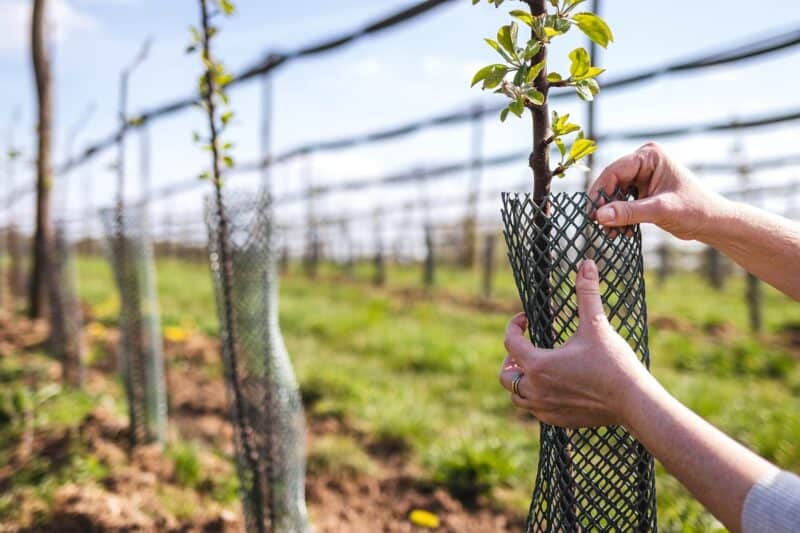
What about livestock safety? Are foxes or weasels going to kill all your chickens? Are there coyotes or mountain lions nearby that might take out your goats? Which predator species are known to frequent that area? You’ll need to find this out to determine whether you’ll need to invest money in guard dogs or perimeter fencing.
If it’s the latter, will you need an electric fence to keep your animals safe from bears and cats? Then you’ll need to take that into account when planning and budgeting for your alternative electricity sources.
4. Determine Your Budget and Get Researching
As you’ve likely determined by reading this far, shifting to off-grid living will require a fair bit of monetary investment. If you want to have autonomous electricity, water, and food, you’re going to have to sort out the means of doing so. That means buying all the equipment you’ll need to live comfortably in your new lifestyle.
Every single idea you have for off-grid living has to be rock solid in terms of planning.
Electricity
Your individual or group needs will determine the type of power equipment you’ll need to buy. For instance, if you live by yourself and prefer books over Netflix, you can get away with only using electricity for an hour or so a day. A family that relies on power for employment and entertainment will need a lot more.
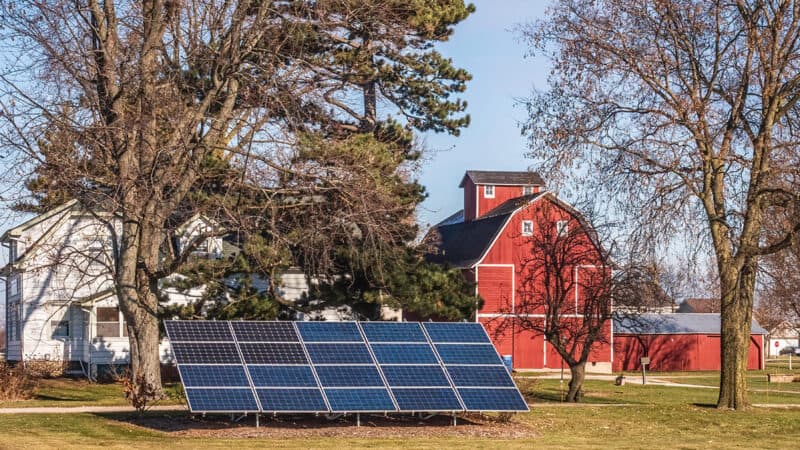
You have three off-grid power options:
- Hydro
- Solar
- Gas-powered generator
As you can see in our article about these three off-grid power sources, each one of them has pros and cons. Some are more expensive than others, others are more reliable. When you’re doing your research and budgeting, be realistic about how much money you can put into the care and maintenance of these systems.
Will you have enough money to replace outdoor solar panels when and if they are damaged? How about inverters and energy storage options? Budget for gas if you want to run a generator for several hours a day or as an emergency, as well.
When it comes to off-grid electricity options, it’s good to have at least two options. That way, if one of them falters or needs maintenance work, you can use the other in the interim.
While you’re researching alternative energy options, look into what kinds of appliances are compatible with them. For example, can you just use an inverter to power your current kitchen appliances? Or do you need to invest money in a solar-powered refrigerator or oven?
Water
A human will die after a few days without water, so a proper water source is a priority. Since you can live without electricity, you’ll probably want to shift water to the top of the priority list.
Will you have a source of clean, potable water if you disconnect from your local water grid system? Or are you moving to a location where you’ll be able to source it from the land?
If you’re going for rainwater and snow catchment, will you use aboveground storage tanks or underground cisterns? How much money do you have to invest in those and maintain them if they rupture?
Are there subterranean water sources? How much will it cost to have a well drilled? Will you be able to rig up a manual pump? Or will you need to have solar or wind-powered electricity to keep your water pump functional?
Let’s say you have a river or lake nearby to draw water from. How are you going to filter said water? Through a hand-pumped ceramic filter? Or a larger filtration system to ensure that everyone in your family has enough to drink, cook, and wash with every day?
What are common pathogens that can affect your local water supply? Are there livestock farms uphill nearby that might infect the water table with their droppings? Or an algae bloom in the lake that pops up during certain weather conditions and requires extra treatment to make the water potable?
Food
You have your water options sorted. Now, what about food? Living off-grid usually includes providing as much food for yourself and your family as possible. If you all eat a plant-based diet, then you’ll need to determine how much space you’ll need to grow enough for everyone.
Determine which plants everyone will eat, as there’s no point in growing okra or kale if someone hates it. Then you’ll need to test your soil to see what amendments are needed to make it fertile. After that, budget for the seeds or seedlings you need to purchase.
How are you going to water them? Will you keep rainwater barrels or cisterns near the gardens? Do you need to budget for electricity to power water pumps for your hoses?
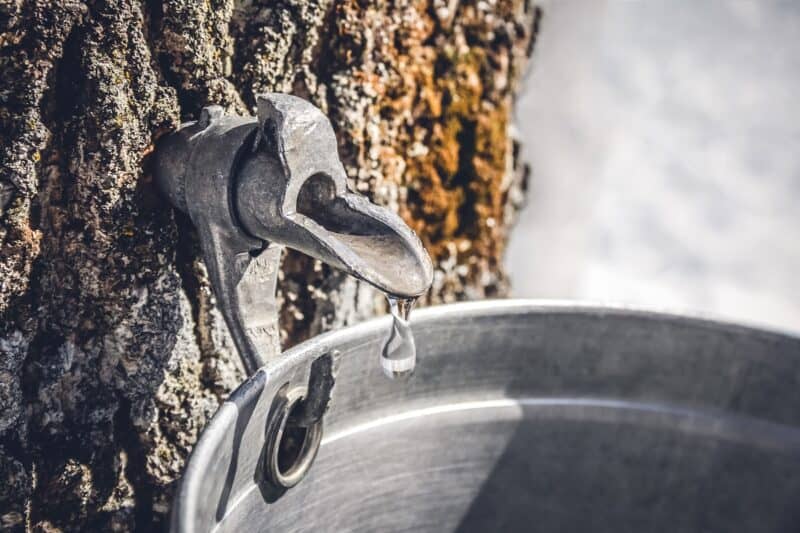
Sort out whether local plant species are beneficial to your off-grid needs. Are there good trees around for lumber and firewood? Can you use them as food resources? Will you be able to gather wild nuts and berries? Tap trees for syrup? Familiarize yourself with as many local species as possible so you know what you’ll have available.
Are you going to raise livestock for meat? Chickens for eggs? What are you going to feed these animals? And how are you going to store the harvest? Will you dehydrate the meat into jerky? Determine whether you need to invest in a solar dehydrator or budget for eight to 12 hours of electricity for each dehydrated batch.
Sanitation
This isn’t anyone’s favorite topic, but it’s a vital one to take into consideration.
How are you going to deal with your family’s daily sanitary needs? Are you going to have an outhouse on the property? If so, you’ll need to learn the local laws as to how far it needs to be from the house, as well as where to situate it so it won’t contaminate the water table.
The same goes for a composting toilet. Will you be able to source the lime or sawdust for it locally? Or will you need to budget for that? Do you have a plan regarding how you’re going to rotate it on a regular basis? How and where are you going to compost the content?
Not interested in either of those? Look into a septic system instead. How are you going to rig up water in order to flush your toilet? What are the local laws regarding how often the tank needs to be emptied? Generally, most areas require the tank to be emptied every 1-2 years for a family home, or every 3-4 years for a vacation home.
Are there local companies that can do this for you? How much do they charge?
If you have to deal with menstrual cycles, you’ll need to think about how to wash reusable pads, or whether you can use catchment cups instead. The same goes for diapers if you have infants or toddlers. Do you have a reliable water source that you can use to wash and sterilize these items?
What about pets and livestock? What are your plans to keep their living areas clean and sanitary? Do you have a composting system in place for horse, goat, or rabbit droppings? If you have dogs, how are you dealing with their leavings?
Start Small, Right Where You Are
You don’t need to sell all your belongings and head out to the woods in order to start adopting an off-grid lifestyle. In fact, you can start to make small changes right now that can lead you to more off-grid options in the near future.
Whether you live in an urban apartment or a semi-rural home, you can start reducing your dependence on the power grid by making a few small changes. Get some portable solar panels and use them to charge your phone, tablet, or laptop. Create a water catchment bucket for your balcony or back patio, and use it to water herbs and small vegetable plants you’re growing on your windowsills.
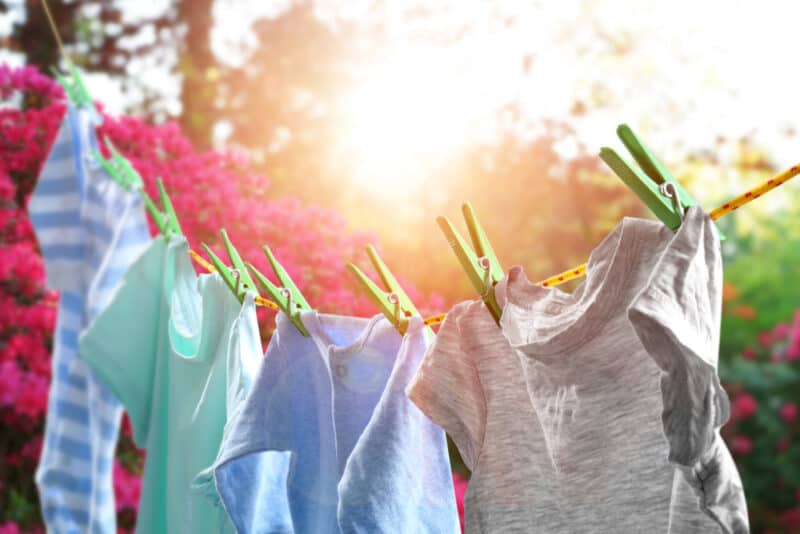
Hang your laundry outside to dry whenever possible: this doesn’t use any power and will do wonders to lower your electricity bill. Do you have a backyard? Get a cistern and rig up an outdoor shower. They’re wonderful, and you’ll be able to start (or end) your day with a blissful wash outside whenever the weather is nice.
Grow as much food as you can, wherever you can. Turn scraps into soups, preserves, and seasonings for other meals. Make your own clothes if you can, use candles in the evening instead of turning all the lights on.
Ease into this lifestyle bit by bit with small changes, while determining what type of lifestyle you really want to have. Once you’ve determined how it is you want to live, you can take firm steps to make that the reality. Just keep making lists, researching the best options for the items you feel that you’ll need, and set money aside to make it all happen.
The Advantages and Drawbacks of Living Off the Grid
The off-grid lifestyle has a lot of advantages and some drawbacks too. They should each be weighed carefully to ensure you make the best decision for yourself and your loved ones.
Advantages:
The main advantage of off-grid living is that you are completely self-sufficient. If the grid power goes out, so what? It doesn’t impact you. If an emergency happens at the local city water plant, you’re still covered. Not to mention all of the money you WON’T be spending on monthly appliance bills.
Also, though going off-grid could require an initial investment, if you choose one of these smaller alternative housing options your investment may not be as large as you might think.
Plus, there is freedom in living a completely self-sufficient lifestyle, and you can’t put a dollar sign on freedom.
Disadvantages:
However, you can’t forget the disadvantages of going off-grid either. You may have to move from your current location because a lot of places won’t allow you to be completely off-the-grid.
You also need to consider the welfare of your children, if you have them. In some areas, child protective services might try to step in if you’re raising children in a home that doesn’t have running water or electricity.
The courts might consider this to be an unhealthy environment for kids and may try to take custody of them. Learn the laws in your area so you can avoid potential trauma and lengthy court battles.
You must consider the investment you’re making if you decide to go with the “modern off-grid” option. It’s not cheap, but you may deem the expense worth it.
Let’s also not forget some of the lifestyle changes you might have to make. If you choose to go totally off-grid without any help from wind, solar, or hydropower, your whole life will change. You will no longer be able to just run to the bathroom for a quick shower, or run water in your sink to wash dishes.
Whichever form of off-grid lifestyle you intend to entertain, we just hope that you find happiness in the process.
